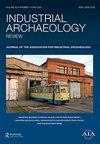帝国的工具?
IF 0.1
4区 历史学
0 ARCHAEOLOGY
引用次数: 0
摘要
摘要:这篇文章对丹尼尔·海德里克1981年的《19世纪电报:帝国的工具》提出了质疑。这件作品没有将电报视为一种整洁的帝国工具,而是将电报解构成其混乱的组成部分,梳理出与之相连的人和材料的国际景观。我们从智利殖民地的铜冶炼厂转移到砂拉越土著的古塔胶收藏家;从瑞典农村的农民焦油燃烧器到被困在美国南部后殖民地营地的松节油工人;从孟加拉国参加派对的黄麻种植者到印度洋上漫游的电缆工程师。这篇文章揭示了19世纪一项关键技术中的人物、斗争、本土知识和隐藏的工作。本文章由计算机程序翻译,如有差异,请以英文原文为准。
The Tools of Empire?
ABSTRACT This piece problematises Daniel Headrick’s 1981 work on 19th-century telegraphy: Tools of Empire. Instead of viewing the telegraph as a neat Imperial tool, this piece deconstructs the cables into its messy constituent parts, teasing out the international landscapes of people and materials linked by them. We move from the colonial copper-smelters in Chile to the indigenous gutta-percha collectors of Sarawak; from the peasant tar-burners of rural Sweden to the turpentine workers trapped in camps in the postbellum American south; from the partying jute-growers of Bangladesh to the roaming cable engineers on the Indian Ocean. This piece uncovers the people, the struggles, the indigenous knowledge and the hidden work that went into a key piece of 19th-century technology.
求助全文
通过发布文献求助,成功后即可免费获取论文全文。
去求助
来源期刊

Industrial Archaeology Review
Multiple-
CiteScore
0.40
自引率
66.70%
发文量
26
期刊介绍:
Industrial Archaeology Review aims to publish research in industrial archaeology, which is defined as a period study embracing the tangible evidence of social, economic and technological development in the period since industrialisation, generally from the early-18th century onwards. It is a peer-reviewed academic journal, with scholarly standards of presentation, yet seeks to encourage submissions from both amateurs and professionals which will inform all those working in the field of current developments. Industrial Archaeology Review is the journal of the Association for Industrial Archaeology. Published twice a year, the focal point and common theme of its contents is the surviving evidence of industrial activity.
 求助内容:
求助内容: 应助结果提醒方式:
应助结果提醒方式:


